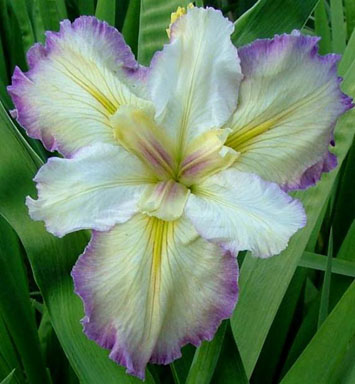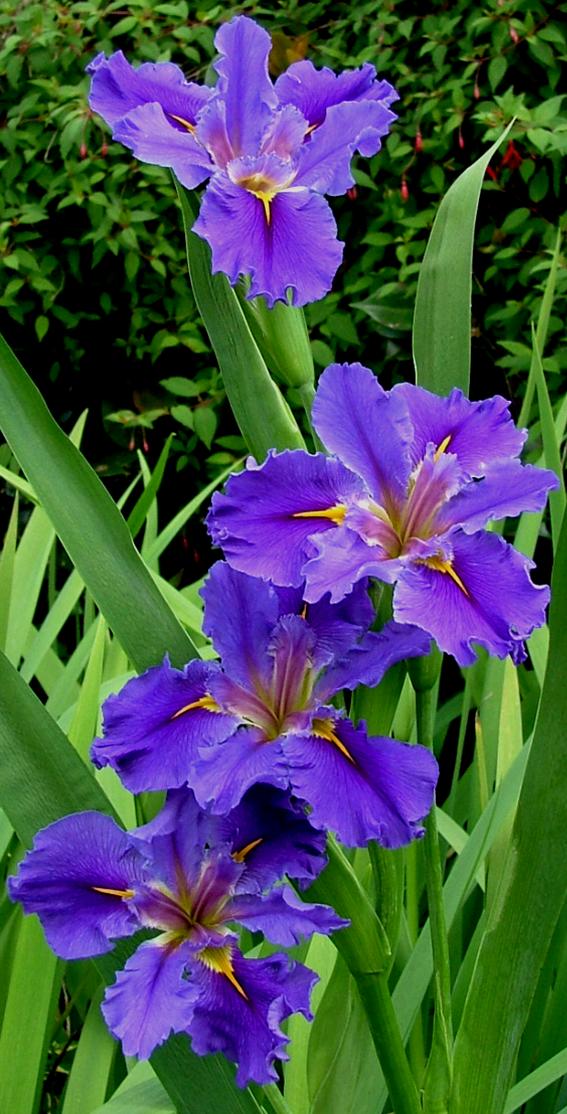Louisiana Irises – Native American Wildflowers
- Waihi Wedding (H Pryor )
- Stephanie Helene (H Pryor )
- Darlene C (H Pryor 2007)
Louisiana irises comprise a group of beardless irises native to Louisiana and the southeastern United States, occurring as far west as East Texas and as far north as Arkansas and Missouri. They occur nowhere else in the world. In contrast to most other irises, Louisiana irises, having originated in the swamps and marshes, thrive under moist, soggy conditions. These irises, representing five species, have existed in the wild for an undetermined period, probably many thousands of years.
Natural hybridization between species has been more extensive than for any other type of iris. Controlled hybridizing that began about 1940 has produced a spectacular group of modern garden irises.
Distinguishing features
The colour range of the Louisiana irises is the broadest and most vibrant of any iris group and includes unlimited patterns and blends as well as solid colours. Flower forms vary from pendant to flat to flaring and may be single or semi-double. Sizes vary from about three inches to over seven inches across. Edges may be smooth, lacy or ruffled. Stalks are one to five feet tall.
Adaptability
Louisiana irises are adaptable to a wide range of climates and soils. They can be grown with moderate to excellent results in almost any part of New Zealand and most other countries. Limits of adaptability have not been determined. The best suggestion for almost any location is “try them.” You will probably be amazed by the results! They can be grown with annuals and other perennials in regular beds, in bogs or in water up to a foot deep. They can also be grown in containers in shallow water.
Cultural requirements
Culture is relatively easy, but a few items are critical and will pay great dividends in performance. In their natural habitat they grow under constantly moist conditions, often in shallow water. Duplicating such conditions in a garden by planting in low, easily flooded beds or around a pond is highly recommended. They perform well in an ordinary bed if sufficient water is provided during the year. Other important requirements include (1) at least a half day of sun, (2) acid soil of pH 6.5 or less (acidification agents may be necessary), (3) high fertility with manures and compost or generous applications of acidic fertilizer, definitely no lime. Mulching is recommended throughout the year, but especially during hot, sunny weather.
Rhizomes are best transplanted either right after bloom or in late summer and early autumn. Place the top of the rhizome about one inch below soil level and do not allow it to dry out. Louisiana irises bloom at the same time as bearded irises or slightly later in most climates.
Availability
Louisiana irises are specialty plants, and the best and latest stock is available from specialty growers.
Stephanie Boot
2010



